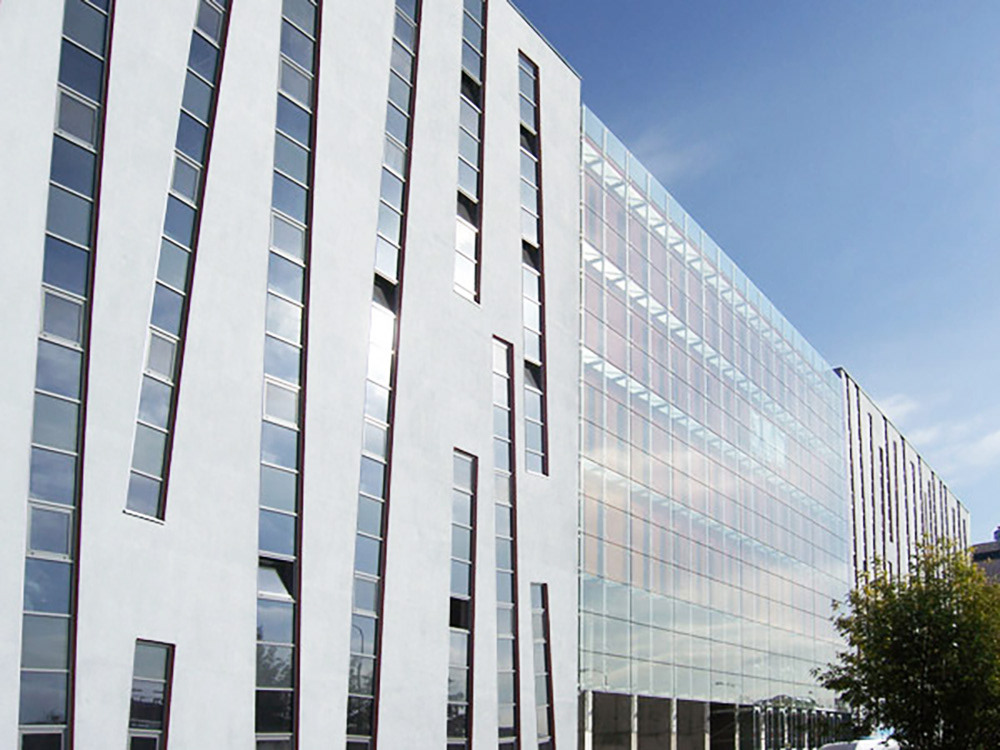









Popowice City Park Apartments was designed within BABW architectural office in Wroclaw together with Marek Wisniewski and Tomasz Bzdega. By initiating such a project Marek Wisniewski and Tomasz Bzdega have pioneered the redevelopment of Wroclaw City urban structures. At that time this part of the city suffered from post-modernistic ideologies of proletarian equality. One could not change the appearance and urban mechanisms of the whole district, but we could design a beacon of the new design approach. Park Apartments was to introduce a new Placemaking and change the district from within. Change the spatial order, change the private and public open spaces relationships, and change the aesthetics within the same forms. Placemaking by improving quality of life by reinterpretation of existing building blocks and communicating the sense of that change-by-design using large-scale abstract symbolism
Each City Grid acts as a city pocket that may be a whole world enclosed within the space it was given. Neighbouring grids can be like parallel universes that are not aware of the existence of one another but thanks to circulation in between we can express by design their nature on the envelope of such pocket. In this case that would be a simplified visual infographic in a form of architectural elements. The idea was to communicate the concept to the outside world using a symbolic infographic on a large-scale architectural envelope.
Its elevation is a visual interface infographic broadcasting the essence from the heart of the building to the outside city landscape creating a synthesized pocket of forest formation.
Synthesized forest on elevation is only a kaleidoscope vision of internal courtyard birch-tree enclosed parks. These internal courtyard pockets of organized forest would enrich the sustainable and healthy lifestyle of habitats. The inside-out vision would also stand for a different design approach in relation to the outer rough and strong cuts of the building envelope versus the inner soft and welcoming natural arrangement of elements of nature. In such a way, a representation of the building design strategy is reflected on elevation using the schematic language of pictograms that are used as architectural forms of expression on a bigger, urban scale. An urban pictogram.
The Idea has to work in the pragmatic world otherwise it is just a wish and fantasy and not architecture, an organized reality.
Symbolism in Architecture is a relationship between an idea and an object. Though there is a significant difference between symbolism and the representation of ideas and notions. The symbol may take the form of a graphical representation of a symbolic concept and be used as an ornament in architecture. The ornament, therefore, becomes a symbolic sign of a philosophical structure of architecture. An abstract rooted idea expressed in architecture. Representations depict the state or object one wanted to be seen, with no other meaning attached. The symbol on the other hand stands for philosophies behind the relationship of the depicted representation and its context. Abstract representation of the birch trees in this project is taking the form of an urban-scale ornamental facade facing an urban-scale transportation route on an urbanized pragmatic architectural block. Becoming a symbol of the urbanized abstract forest. Simple mass with a multiplication of details thanks to the diversity of angles applied to the same elements of fenestration. A natural abstract rule becomes an architectural design expression. An urbanized massive block reflects rays of sunshine through the cuts of this abstract composition like sunlight finding its way through the branches of trees.
Ambient in architecture, reflection as a tool to dematerialize the building, where, The building is a representation of ambience and architectural language transformation within its own formal and abstract symbols.
Façade A facade or façade is generally the most important exterior side of a building, usually, but not always, the front. The word comes from the French word for “frontage” or “face”. In architecture, the façade of a building is often the most important from a design standpoint, as it sets the tone for the rest of the building.
JACA
ARCHITECTURE+DESIGN











